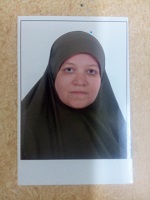BACKGROUND: Postmortem diagnosis of drowning is one of the most difficult tasks in forensic pathology. Autopsy finding may be confused with other types of asphyxia and may not be present during autopsy. OBJECTIVES: The aim of the present study was to measure the post-mortem level of iron (Fe) in both right and left ventricles of the heart of albino rats and to determine its diagnostic value in differentiation between drowning in fresh and salt-water. METHODS: This work was conducted on 140 male albino rats. The rats were divided into 3 groups (control, fresh water, salt water). Mean iron concentration in right and left ventricles and mean difference of iron concentration (RVFe–LVFe) in the fresh and salt water drowning are compared with the control using t-test in SPSS program. RESULTS: The results revealed a significant decrease in the mean concentration of iron in right and left ventricles in fresh water drowning in GII a (immediately) and in GII b (after 3 hours) in comparison with control. There was a significant increase in the mean difference of iron concentration between right and left ventricles in (GII a) and (GII b) in comparison with the control. There were no significant changes in mean iron concentration in right or left ventricles in GIII a (salt water immediately) or GIII b (salt water 3h) in comparison with the control. There was a significant decrease in mean difference of iron concentration between right and left ventricles in (GIII a) group in comparison with control. There were no significant changes in mean difference of iron concentration between right and left ventricles in (GIII b) in comparison with the control group. There was a significant decrease in mean iron concentration in right and left ventricles in (GII a) and (GII b) in comparison with (GIII a) and (GIII b) respectively. There was a significant increase in mean difference of iron concentration between right ventricle and left ventricles in (GII a) and (GII b) in comparison with (GIII a) and (GIII b) respectively. In samples taken in (GII c) and (GIII c) samples were difficult to be taken due to advanced putrefaction and postmortem clotting.

